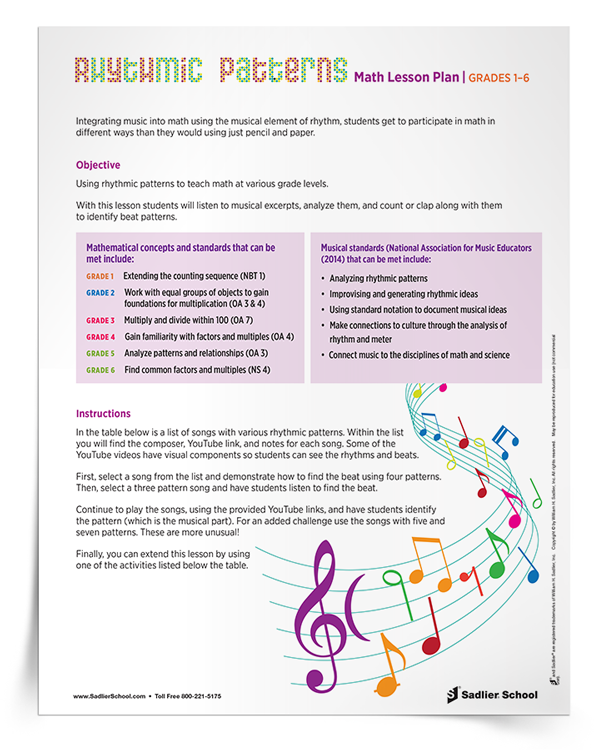

He and Aidan wrote songs that added up to 100 and 200. I chose to aim this activity at Gresham’s math level (finished 2nd grade, starting 3rd grade in the fall), and so I used the numbers 5, 10, and 15.

#Rate my music math lesson how to
I showed the boys how to write a composition by drawing music notes that matched the color of the note they wanted to use. If you don’t own any real instruments – keep reading! It would be easy to do this activity with homemade instruments.Īt each station, we used color coded notes. I’m a violinist and love music and instruments, so it was worth the investment. We own several real kid’s instruments that I purchased for use in our homeschooling. We adapted this activity for home instead of a classroom, and the boys loved it. Kids are practicing SO many skills through this activity: The other thing I love about this is that by pre-selecting the notes, basically any composition will sound pleasant to the ear. Instead of trying to create a song out of an endless number of notes (too open-ended), kids have a manageable amount of notes to choose from and a goal in mind (add up to 100). I absolutely love this activity! For one thing, this is a great way to explore musical composition without overwhelming kids. The two remaining keys were labeled “5” and “10.” The students were instructed to write a composition by creating a pattern of the two notes with the only requirement being that the finished composition needed to add up to 100.

In the “real kids” segment of the show, a classroom teacher gave his students a xylophone with all but two keys removed. Several weeks ago on the Curious George PBS Kids show, I saw a fun idea to create musical compositions with a mathematical element. That means that if you make a purchase through a product link, I will earn a small percentage of the sale at no additional cost to you. This post contains Amazon Affiliate links.


 0 kommentar(er)
0 kommentar(er)
